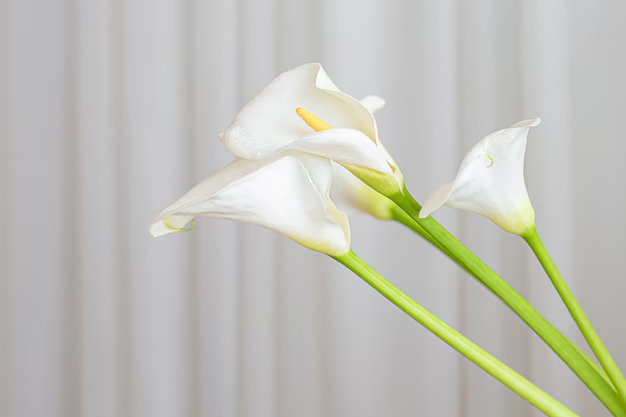Introduction
The Calla Lily is one of the most elegant flowers out there. With its smooth, trumpet-shaped blooms and vibrant colors, it’s easy to see why people love it. But there’s more to this flower than just looks! In this article, we’ll explore the unique beauty of the Calla Lily, its symbolism, growing tips, and how to care for it. Whether you’re a flower enthusiast or just curious, you’ll find interesting information about this stunning plant.
What is a Calla Lily?
The Calla Lily is a beautiful flowering plant that belongs to the family Araceae. It’s known for its unique shape and striking colors, which can range from white and yellow to pink and purple. Unlike many other flowers, the Calla Lily isn’t actually a lily; it gets its name because of its lily-like appearance.
Characteristics of Calla Lilies
Calla Lilies have long, slender stems and smooth, funnel-shaped blooms. They can grow anywhere from 1 to 3 feet tall, making them perfect for gardens or indoor arrangements. The leaves are large and glossy, providing a lovely backdrop for the blooms.
Types of Calla Lilies
There are several types of Calla Lilies, each with its own unique charm. Here are a few popular ones:
- Standard Calla Lily: The classic white flower often seen in weddings.
- Miniature Calla Lily: Smaller versions that come in various colors.
- Black Calla Lily: A stunning dark flower that adds drama to any arrangement.
The Symbolism of Calla Lilies
Calla Lilies are not just pretty flowers; they also carry deep meanings. Here are some symbols associated with them:
- Purity: The white Calla Lily is often seen as a symbol of purity and innocence.
- Fertility: In some cultures, these flowers are associated with fertility and new beginnings.
- Love and Romance: They are popular in wedding bouquets because they represent true love.
Growing Calla Lilies
If you want to grow your own Calla Lilies, here are some tips to help you get started:
Choosing the Right Location
Calla Lilies thrive in well-drained soil with plenty of sunlight. They prefer a spot where they can get at least six hours of sunlight each day.
Planting Calla Lilies
You can plant Calla Lilies from bulbs. Here’s how:
- Prepare the Soil: Make sure the soil is loose and well-drained.
- Plant the Bulbs: Dig a hole about 4 inches deep and place the bulb in it, pointed side up.
- Water: Give the bulbs a good drink of water after planting.
Care and Maintenance
Calla Lilies need regular care to grow healthy:
- Watering: Keep the soil moist but not soggy. Water them regularly, especially during dry spells.
- Fertilizing: Use a balanced fertilizer every few weeks during the growing season.
- Pruning: Remove any dead or yellowing leaves to keep the plant healthy.
Common Problems with Calla Lilies
Like any plant, Calla Lilies can face some challenges. Here are a few common issues:
Pests
Watch out for pests like aphids and spider mites. If you see any, use insecticidal soap to treat them.
Diseases
Calla Lilies can get fungal diseases if they’re too wet. Make sure there’s good air circulation around the plants and avoid overhead watering.
Calla Lilies in Arrangements
Calla Lilies make stunning additions to floral arrangements. Their unique shape and colors can elevate any bouquet. Here are some ideas for using Calla Lilies in arrangements:
- Wedding Bouquets: Their elegance makes them a popular choice for bridal bouquets.
- Centerpieces: Use Calla Lilies in vases as beautiful centerpieces for events.
- Gift Bouquets: A simple arrangement of Calla Lilies can be a lovely gift for any occasion.
Conclusion
The Calla Lily is a remarkable flower that brings beauty and elegance to any space. Its unique shape, vibrant colors, and rich symbolism make it a favorite among flower lovers. Whether you choose to grow them in your garden or use them in floral arrangements, Calla Lilies are sure to impress. With the right care and attention, these stunning flowers can thrive and bring joy for many years.
